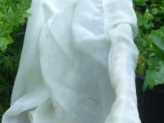- Homesteading
- Frugal Gardening
Frugal Gardening
Growing Plants With Less
Growing plants with less money, expense, resources, energy and so on.
This is not an easy thing, with everything costing more all the time. Find some simple ways to get seedlings going, take cuttings, and plant the results in your garden.
Back in the day, when our grandmothers gardened, they would share plant starts with friends and relatives, collect their own seeds, and grow more than they needed so they could dispense the produce with those in need.
Now, it's harder to find local sources of plant material, even seeds. Public gardens are so pruned and maintained that there isn't a seedpod in sight, and they frown on people taking cuttings.
The best sources are those on social media or through a local plant club.
You may be able to glean free or cheap plants, seeds and cuttings this way, and over time, get your own collection going.
The cycle of sharing can be lifelong and so satisfying for knowledgeable gardeners.
They know which plants do best in your conditions, because they've grown them for many seasons.
Gardeners are generous and don't hesitate to give away seedlings and cuttings to anyone who asks (or even if they don't) just because they want everyone to love those same plants.
 Frugal Gardening - salvage tires to plant with vegetables or flowers
Frugal Gardening - salvage tires to plant with vegetables or flowersThe other aspect of growing plants is the containers you use to put them in. Some of the best, and cheapest, are recycled containers. Egg cartons, the kraft or cardboard kind, make perfect little seedling pots.
When it's time to plant them, the pot and all goes right into the soil. Make sure you wet them down well before planting, so the paper will disintegrate in the soil and the tiny roots can break through.
Recycled jars make great cloches for tender seedlings or to give higher humidity to cuttings under propagation.
Plastic margarine or yogurt containers are the perfect size for multiple seeds, and are fairly uniform in size.
This means they'll fit into a flat or box to transport them easily.
Make sure to put holes in this type of container for drainage.
I collect plastic take-out containers with clear lids - a perfect little mini greenhouse for cuttings or seedlings.


























